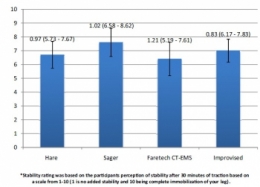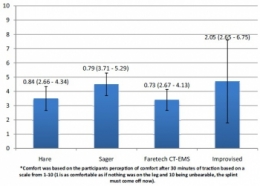Immobilisation: Matériel spécifique ?
19/07/2015
Improvised traction splints: a wilderness medicine tool or hindrance?
Weichenthal L et Al. Wilderness Environ Med. 2012 Mar;23(1):61-4
------------------------------------------------
Immobiliser un membre le plus tôt possible et ce de manière efficace est un des enjeux de la mise en condition d'évacuation. Il s'agit là de prévenir le mieux possible toute complication secondaire, de réduire le saignement et la douleur. Pour cela existe de nombreux équipements proposés par l'industrie. Miass sont ils vraiment utiles ? Pas si évident si l'on en croit le document proposé. Il pourrait exister à l'évidence des moyens simples et efficaces surtout moins coûteux d'atteindre ces objectifs.
------------------------------------------------
OBJECTIVES:
To investigate whether a traction splint made from improvised materials is as efficacious as commercially available devices in terms of traction provided and perceived comfort and stability.
METHODS:
This was a prospective randomized crossover study utilizing 10 healthy, uninjured volunteers. The subjects were randomized to be placed in 4 different traction devices, in differing order, each for 30 minutes. Three of the traction splints are commercially available: The HARE, Sager, and Faretech CT-EMS. The fourth traction device was an improvised splint made as described in Medicine for the Backcountry: A Practical Guide to Wilderness First Aid. At the end of 30 minutes the pounds of force created by each device was measured. The volunteers were also asked at that time to subjectively report the comfort and stability of the splint separately on a scale from 1 to 10.
RESULTS:
All traction splints performed similarly with regard to the primary outcome measure of mean pounds of traction created at the end of 30 minutes of application with results ranging from 10.4 to 13.3 pounds. There was little difference reported by participants in regard to stability or comfort between the 4 traction devices.
CONCLUSIONS:
In this small pilot study, an improvised traction splint was not inferior to commercially available devices. Further research in needed in this area.




Les commentaires sont fermés.